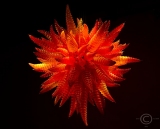- Forum
- Photography and Camera Forum
- Equipment Research, Buying and Using
- Lenses
- Aperature on the Barrel of Lenses
Aperature on the Barrel of Lenses
-
 Topic Author
Topic Author
- Olenka00
- Newbie
- Followers: 19
- Posts: 4
-
Points:
315
Post #716144
I have been into photography for a few years now, and am getting ready to buy my first camera lens.
The camera I have been using up until now was bought by my parents a few years back, the Canon T5 Rebel. I have been considering upgrading to the Sony A7iii, but first need to get the lens situation figured out.
No matter where I try looking, I can not find a forum or article or YT video, explaining the numbers and everything on the barrel of the lens. Everyone says it is super important, but never goes into a ton of depth regarding what it does.
I understand that the aperature rating on the barrel of the lens means the maximum aperature for that particular lens, and I understand that the larger the aperature, the more light that lens can take in, but what I don't understand is does that "more light" only affect the lens when the camera is in that exact aperature that is on the barrel? Or does the maximum aperature affect all of the aperatures, meaning that there will be more light allowed into the lens no matter what aperature I am in, just because it has a higher aperature rating...
I hope this makes sense, I know it is sooo confusing, and even though I have been photographing for a few years now, I am just beginning to seriously understand everything. I really hope someone can help me out, because I have been dying to figure this out, and am so lost when it comes to purchasing a lens!
Thanks in advance!
-

- John Landolfi
- Super User
-
- Nikon D3S, D7100, Sony RX10, Canon G11, F4s, F2sb, RetinaflexIV etc, etc
- Followers: 1205
- Posts: 21605
-
Points:
40394
Post #716155
-
 Topic Author
Topic Author
- Olenka00
- Newbie
- Followers: 19
- Posts: 4
-
Points:
315
Post #716450
-

- Screamin Scott
- Moderator
-
- Nikon D610, Nikon D7100, Nikon D300, Olympus OMD E-M5 MarkII, Olympus OM-D E-M10, Olympus Pen E-P3 + film SLR's
- Followers: 1384
- Posts: 6868
-
Points:
40292
Post #716466
-
 Topic Author
Topic Author
- Olenka00
- Newbie
- Followers: 19
- Posts: 4
-
Points:
315
Post #716474
Basically, if I'm shooting at my highest aperture (F/1.8 for instance), the camera will take in more light, and to put in lamest terms, my background will get more blurry, versus a lens that has the highest aperture of F3.5 or F5.8.
I can still adjust my aperture to whatever I want, say F/18, but the camera will obviously be taking in less light, and have a greater depth of field.
Let me know if I've basically got it down! I think I understand it all now, I feel much more confident shopping for lenses now then I did even 30 minutes ago!
-

- Screamin Scott
- Moderator
-
- Nikon D610, Nikon D7100, Nikon D300, Olympus OMD E-M5 MarkII, Olympus OM-D E-M10, Olympus Pen E-P3 + film SLR's
- Followers: 1384
- Posts: 6868
-
Points:
40292
Post #716476
-

- John Landolfi
- Super User
-
- Nikon D3S, D7100, Sony RX10, Canon G11, F4s, F2sb, RetinaflexIV etc, etc
- Followers: 1205
- Posts: 21605
-
Points:
40394
Post #716574
-

- John Landolfi
- Super User
-
- Nikon D3S, D7100, Sony RX10, Canon G11, F4s, F2sb, RetinaflexIV etc, etc
- Followers: 1205
- Posts: 21605
-
Points:
40394
Post #716575

-
 Topic Author
Topic Author
- Olenka00
- Newbie
- Followers: 19
- Posts: 4
-
Points:
315
-

- John Landolfi
- Super User
-
- Nikon D3S, D7100, Sony RX10, Canon G11, F4s, F2sb, RetinaflexIV etc, etc
- Followers: 1205
- Posts: 21605
-
Points:
40394
Post #716583
- Forum
- Photography and Camera Forum
- Equipment Research, Buying and Using
- Lenses
- Aperature on the Barrel of Lenses
Latest Reviews
The Olympus Pen E-P7 is an affordable micro four thirds mirrorless camera with 4K video capabilities, a 20.3MP sensor, and 121 focus points, making it a solid entry-level camera for beginners.
The Panasonic G9 II is a 25.2-megapixel micro four thirds camera with numerous features that make it punch out of its weight class, like 779 AF points, 5.8K video, and weather sealing.
The Fujifilm XT5 is a 40MP mirrorless camera capable of 6.2K video at 30p. With those specs, it’s an ideal choice for photographers needing a camera to pull double duty for imaging and video.
The Canon EOS R100 is an entry-level mirrorless camera introduced in 2023. But just because it’s an entry-level camera doesn’t mean it’s a bare-bones camera. Find out why in this review!
Latest Articles
Starting a photography business can be a daunting task. There is a lot to do, and many mistakes can be made. This guide helps you minimize mistakes and maximize your success!
The Canon 6D Mark II might be an older DSLR, but that doesn’t mean it isn’t a good option for 2024. In fact, this budget-friendly camera is a powerhouse for stills and videos.
In this guide to the bokeh effect, you’ll learn what bokeh is and the factors involved in creating it. You’ll also explore some beautiful example images to spark your creativity with bokeh!
Upgrade your kit in 2024 with the best intermediate camera on the market! The question is, what camera fits the bill? We’ve got three top options for you to choose from in this buyer’s guide.
The best photography jobs right now are a mix of tried-and-true gigs like wedding photography and new jobs highlighting AI’s capabilities, travel, and videography.
The Olympus Pen E-P7 is an affordable micro four thirds mirrorless camera with 4K video capabilities, a 20.3MP sensor, and 121 focus points, making it a solid entry-level camera for beginners.
Starting a photography business is one thing; sustaining your business over a long period of time is another. Use the tips in this professional photography guide to build something with longevity!
The Panasonic G9 II is a 25.2-megapixel micro four thirds camera with numerous features that make it punch out of its weight class, like 779 AF points, 5.8K video, and weather sealing.














